The One Pillar Pagoda: Discover Vietnam’s Cultural Jewel
Tucked in Hanoi, The One Pillar Pagoda is an arresting emblem of Vietnamese history and culture. This architectural wonder is not only a sight-seeing destination but also a living tribute to the rich legacy of the nation. Let MOTOGO Tours explore its history, architecture, and cultural significance.
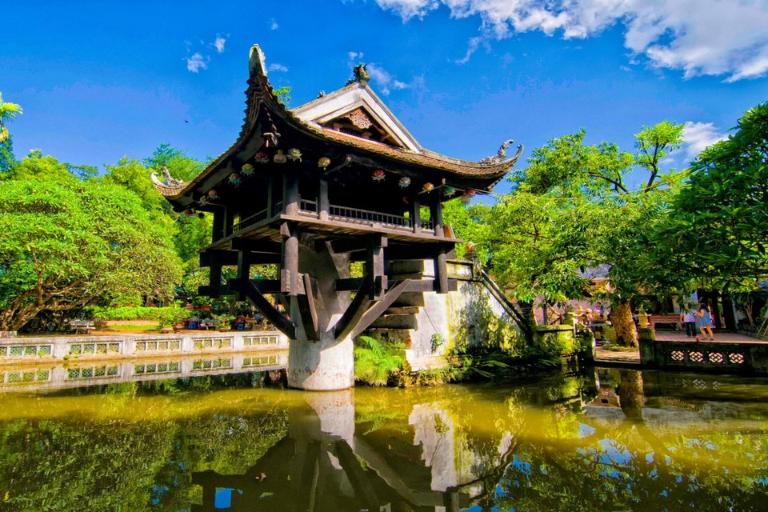
Historical Significance of The One Pillar Pagoda
Origins and Construction
Emperor Ly Thai Tong ordered the one pillar pagoda in 1049. Legend goes that the emperor dreamed of a lovely goddess seated on a lotus flower one night, telling him to construct a pagoda shaped like this offering. For king, this dream was seen as a heavenly message, guiding the building of the pagoda—which would subsequently become a holy site symbolizing hope and rebirth.
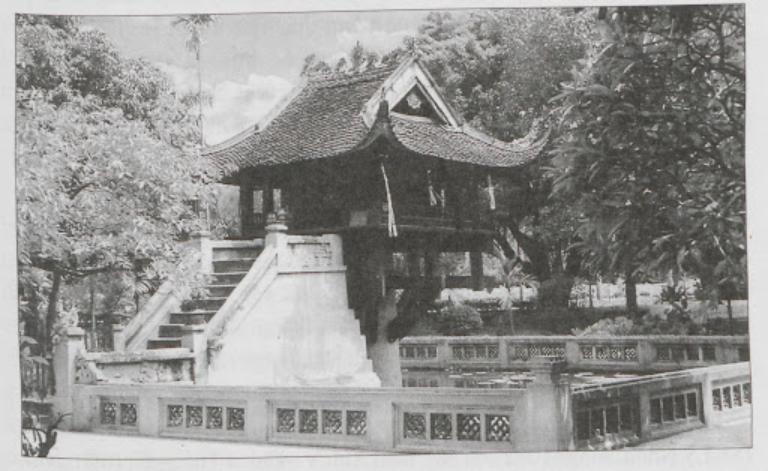
The lotus bloom, a Buddhist emblem of purity and enlightenment, influenced the pagoda’s architectural design. For its period, its unusual construction—which is raised on a single stone pillar—is a stunning achievement of engineering. The original pagoda was constructed of wood and ornamented with elaborate carvings, emphasizing the elegance of Vietnamese workmanship.
Cultural Impact
The One Pillar Pagoda became rapidly a symbol of Vietnamese spirituality and resiliency. It has been quite important in Vietnamese cultural scene over ages. Wars, invasions, and sociopolitical shifts that have molded the nation have all been major historical events observed in the pagoda. Reflecting, worship, and celebration have all taken place here, so capturing the faith and hope of the Vietnamese people.
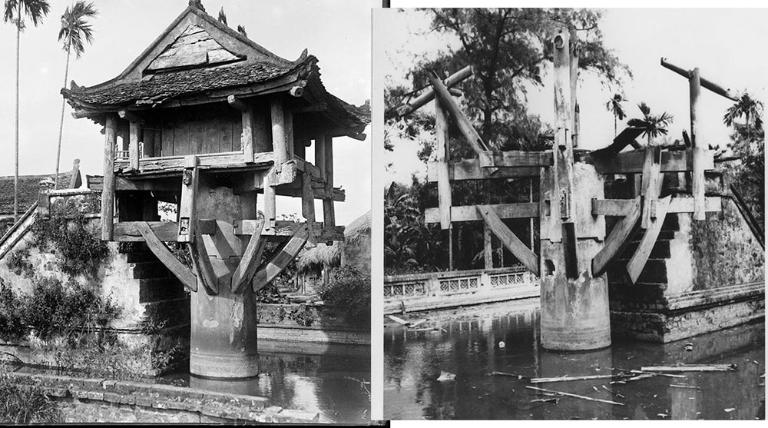
Furthermore ingrained in the national consciousness is The One Pillar Pagoda, which has inspired many artworks, poetry, and stories. Photographs, paintings, and books all frequently show Vietnamese culture in which it is found. The pagoda is a beloved emblem of national identity and pride, not alone a travel destination.
Over its existence, the pagoda has also drawn the attention of several political leaders and personalities. Especially, the pagoda was neglected and restored throughout the French colonial era in the 19th century, therefore mirroring the larger hardships of Vietnam at that moment. Notwithstanding these obstacles, it has stood the test of time and symbolizes the resiliency of the Vietnamese people as well as their will to protect their cultural legacy.
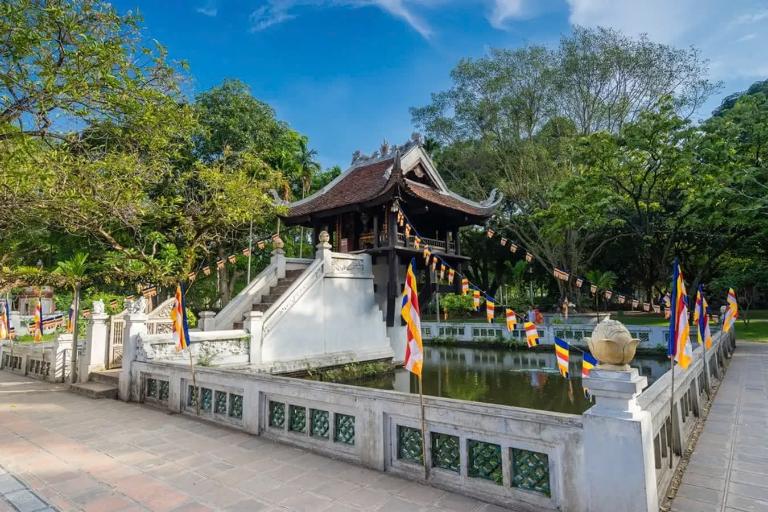
The One Pillar Pagoda is still a major venue for both religious and cultural events nowadays. Both residents and visitors gather here to honor Vietnam’s rich spiritual and historical past, pray for favors, and engage in connection. Beyond its obvious form, the pagoda is a living tribute to Vietnam’s past, culture, and tenacity.
>>> Explore: History of Hanoi: A Journey Through Vietnam’s Capital
Architectural Marvel of The One Pillar Pagoda
Design and Structure
The One Pillar Pagoda’s design is a remarkable mirror of traditional Vietnamese architecture, deftly balancing form with utility. Built in the form of a lotus petal, with rising roughly 1.25 meters above the ground, the pagoda has great symbolic value in Buddhist tradition. Deliberately, this design choice reflects the spiritual aspirations of the Vietnamese people by symbolizing purity, enlightenment, and renewal.
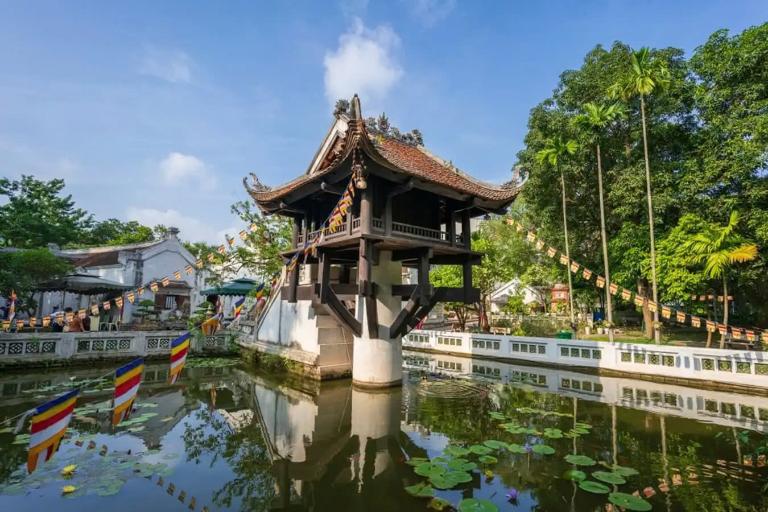
The pagoda itself is set atop a single, roughly 1.2-meter-diameter stone pillar. The pagoda seems to be floating over the calm pond that encircles it since its singularity produces a sense of weightlessness. Stone forms the foundation of the construction; wood makes up the top section and highlights the elegance of the pagoda by means of a lovely interaction between the materials.
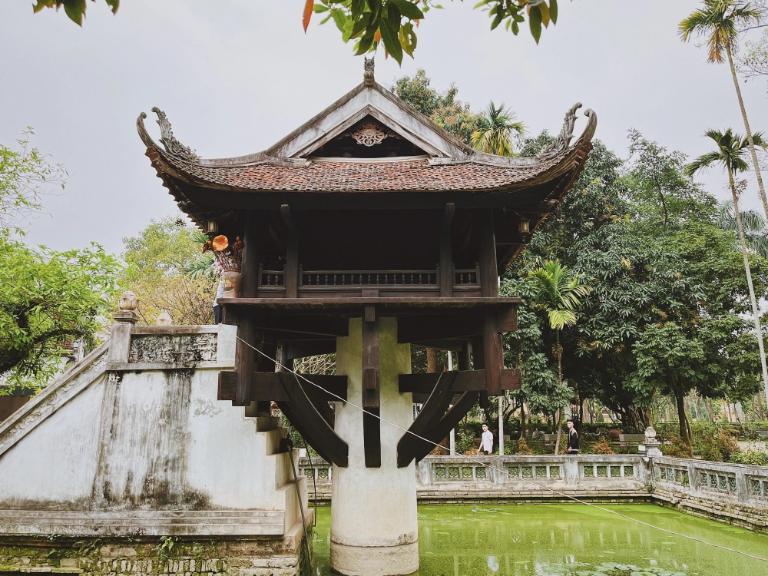
There are numerous tiers to the pagoda’s roof, each covered in traditional tile work and elaborate carvings. The elegant form created by the sloping rooftops against the heavens invites guests to look skyward and value their workmanship. Commonly used in Vietnamese architecture to represent authority and aristocracy, stylized dragon designs embellish every stratum of the roof.
>>> Explore: Hanoi’s Pagodas: Cultural & Spiritual Highlights
Materials Used in Construction
Using locally plentiful materials—mostly wood and stone—the original building of The One Pillar Pagoda made sense. The upper structure of the pagoda’s usage of wood not only adds to its visual appeal but also speaks to conventional Vietnamese building methods. The site’s general spiritual mood is enhanced by the finely carved wooden beams with lucky charms.
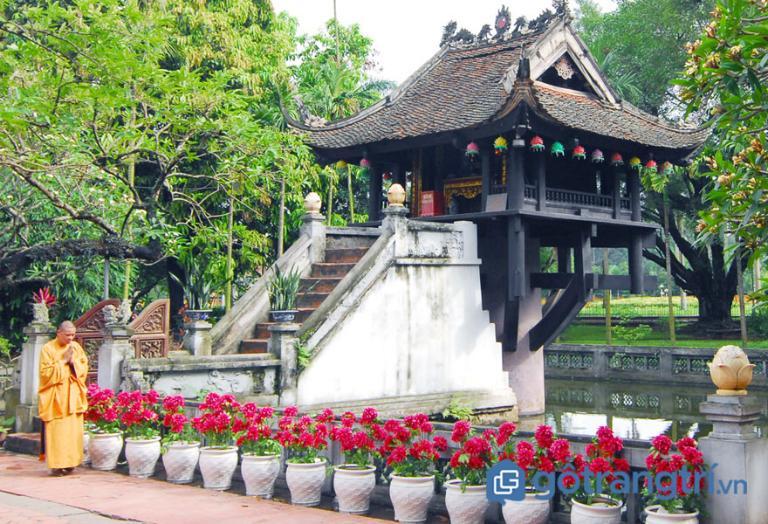
On the other hand, the stone base gives the pagoda the required support and stability thereby enabling it to resist the test of time. But the materials’ impacts of weathering and climatic variables have necessitated constant maintenance and repair. Preservation initiatives in recent times have included honoring the original design while strengthening the construction using more durable materials.
Visiting the One Pillar Pagoda
Location and Accessibility
Hanoi travel wouldn’t be completed if you didn’t visit the One Pillar Pagoda. It located in Hanoi’s Ba Dinh District, is readily reachable by taxi or public transportation. Its close proximity to other historical landmarks such the Presidential Palace and the Ho Chi Minh Mausoleum makes it a handy stop for visitors. You will discover a peaceful refuge just a little stroll from the busy streets.
In addition, to enhance your experience, you can choose guided tours like Hanoi Motorbike Tours. They will provide a comprehensive overview of One Pillar Pagoda’s history and significance
Best Time to Visit
Though the pagoda is lovely all year long, the ideal experience is to visit early in morning or late afternoon. The warm golden light at these hours accentuates the splendor of the pagoda and the adjacent gardens, so perfect for photography and meditation. You will also dodge the throngs that often gather at noon.
Nearby Attractions
There is much more to see in the vicinity once one has visited the One Pillar Pagoda. Just a stone’s throw away, the Ho Chi Minh Mausoleum allows one to honor the founding father of contemporary Vietnam. Additionally close by are the calm Botanical Gardens and the Vietnam Military History Museum, which help to deepen knowledge of the history and culture of the nation.

Tips for Tourists
Etiquette and Customs
Respect regional customs when visiting the One Pillar Pagoda. As a sign of respect as you enter the pagoda, dress modestly covering your knees and shoulders. Removing your shoes before walking on the pagoda’s platform is also somewhat usual. Knowing these customs will improve your experience and demonstrate regard for the local way of life.
Photography Tips
Photographer’s dream come true is the One Pillar Pagoda. Its breathtaking design and gorgeous surroundings create countless chances for catching special events. The best natural light comes from early mornings or late evenings; the reflections in the lotus pond produce unusual viewpoints. Don’t forget to photograph the nearby gardens and the vibrant environment fellow guests create.
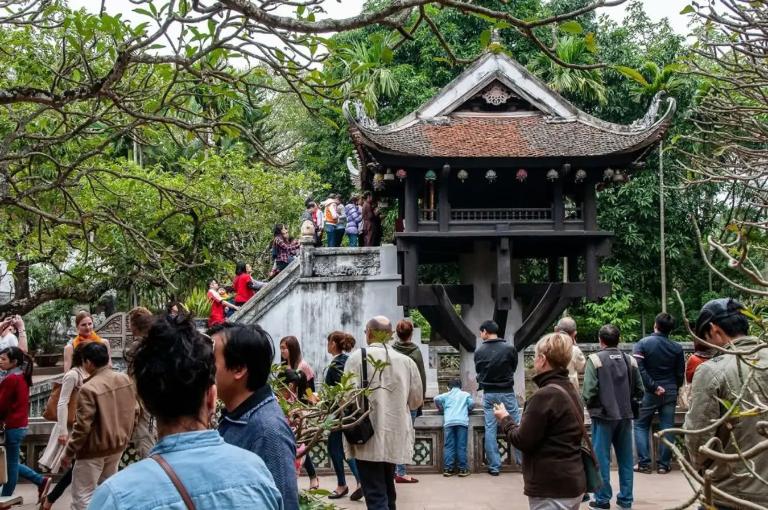
Standing as evidence of Vietnam’s rich cultural legacy, the One Pillar Pagoda exhibits a special fusion of architecture, spirituality, and history. Seeing the pagoda is about absorbing the stories, beliefs, and customs that have molded Vietnam for millennia, not only about appreciating its physical beauty.
Related Posts:












Be the first to comment!